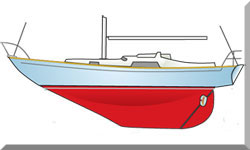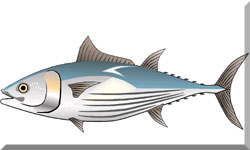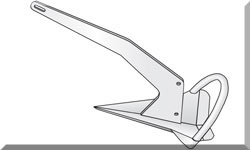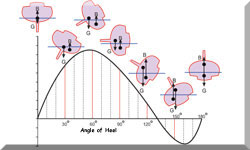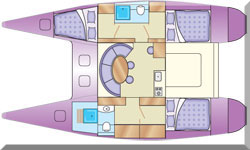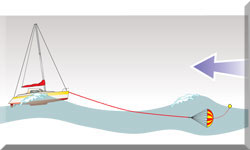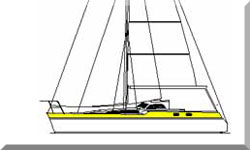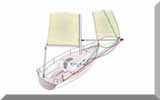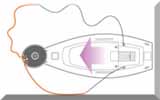- Home
- Morgan Sailboats
Morgan Sailboats: A Timeless Legacy on the Water
For decades, the name Morgan has resonated deeply with sailors. It conjures images of capable, comfortable, and remarkably good-value yachts.

Table of Contents
- The Genesis of a Yachting Powerhouse
- A Design Philosophy for Every Sailor
- Built to Last: Construction and Quality
- A Fleet of Favorites: Key Models and Their Evolution
- Under Sail: Performance and Seaworthiness
- Stepping Aboard: Interior Layout and Comfort
- A Lasting Legacy in the Sailing Community
- Considerations for Prospective Owners
- Conclusion
From their humble beginnings to becoming a true powerhouse in boatbuilding, Morgan sailboats have undeniably carved a significant niche in the world of recreational sailing. This piece dives into their fascinating history, design evolution, and the enduring charm of these iconic vessels.
The Genesis of a Yachting Powerhouse
The compelling story of Morgan Yachts truly begins with one man's vision: Charley Morgan. A passionate sailor, accomplished sailmaker, and talented naval architect, Morgan established his namesake company in St. Petersburg, Florida, back in 1963. His driving force? To craft sturdy, well-performing Morgan sailboats that wouldn't break the bank, making yacht ownership accessible to a much broader audience. This commitment to delivering remarkable value remained a cornerstone of the brand for its entire run.
Morgan Yachts didn't take long to gain prominence, quickly establishing itself as a major player during the fiberglass sailboat boom of the 1960s and '70s. The company saw a few shifts in ownership over the years, with perhaps the most notable being its acquisition by Catalina Yachts in 1984. While the Morgan name continued under Catalina's umbrella, the focus subtly altered, and eventually, the independent production of Morgan sailboats ceased. So, if a brand-new Morgan is on your wish list today, you'll need to turn to the vibrant used boat market.
A Design Philosophy for Every Sailor
Many of Morgan's earliest and most celebrated designs sprang directly from Charley Morgan's own drawing board. His approach was delightfully pragmatic, expertly blending spirited performance with genuinely comfortable interiors. While Morgan maintained in-house design teams, other respected naval architects like Ted Brewer and Nelson Marek also contributed to later models, each leaving their distinctive mark on the brand.
You'll often spot a characteristic blend of hull shapes and deck layouts across various Morgan sailboats. Early iterations frequently featured moderate to longer keels, gradually evolving into fin keels and skeg-attached rudders. This mirrored the wider trends in naval architecture, seeking improved maneuverability and efficiency. Shoal draft options, often incorporating centerboards, became a signature element – a definite boon for sailors exploring the shallower waters of Florida and the Bahamas. This design choice offered practical advantages, from easier access to secluded anchorages to wider cruising grounds.
The primary market for Morgan sailboats consistently targeted recreational sailors. This included everyone from weekend coastal explorers to those dreaming of ambitious offshore passages. The design philosophy always aimed for that sweet spot: a balance between sailing prowess and true liveability, making them incredibly suitable for extended periods aboard. And while they weren't exclusively built for the racecourse, several early models did achieve noteworthy success in handicap racing, underscoring Morgan's ability to infuse genuine performance into their designs.
Built to Last: Construction and Quality
Morgan sailboats, particularly those from the "classic-plastic" era, are widely respected for their robust fiberglass construction. Hulls were typically solid fiberglass, often hand-laid for impressive strength and durability. Decks commonly featured a fiberglass sandwich construction with a balsa core, providing both stiffness and insulation. Critically, high-stress areas like mast steps, chainplates, and stanchions received meticulous reinforcement with solid fiberglass. Encapsulated lead ballast was a frequent sight in many models, a key factor in their commendable stability.
Now, while these boats were generally built like tanks, prospective owners should still be mindful of typical age-related considerations. You might encounter stress cracks in the gelcoat, especially around deck fittings, and there's always the possibility of water intrusion in cored decks. Original electrical systems, as one might expect on a vintage boat, often warrant a careful review and potential upgrade. Frankly, regular maintenance and a thorough pre-purchase inspection are absolutely vital for ensuring these vessels continue to offer years of reliable enjoyment.
A Fleet of Favorites: Key Models and Their Evolution
Morgan's model range was surprisingly diverse, encompassing everything from smaller day-sailers to substantial cruising yachts. Foundational models included the charming Tiger Cub and the ever-popular fiberglass sloop, the Morgan 34. That Morgan 34, a true classic of its time, earned considerable praise for its sturdy build and comfortable interior.
The Out Island series became immensely popular, cementing Morgan's reputation for creating genuinely spacious and comfortable cruisers before the Catalina acquisition. Models like the Morgan Out Island 41 exploded in popularity, particularly within the charter industry. Why the widespread appeal? Their voluminous interiors, generous headroom, and, crucially, their shallow draft were irresistible.
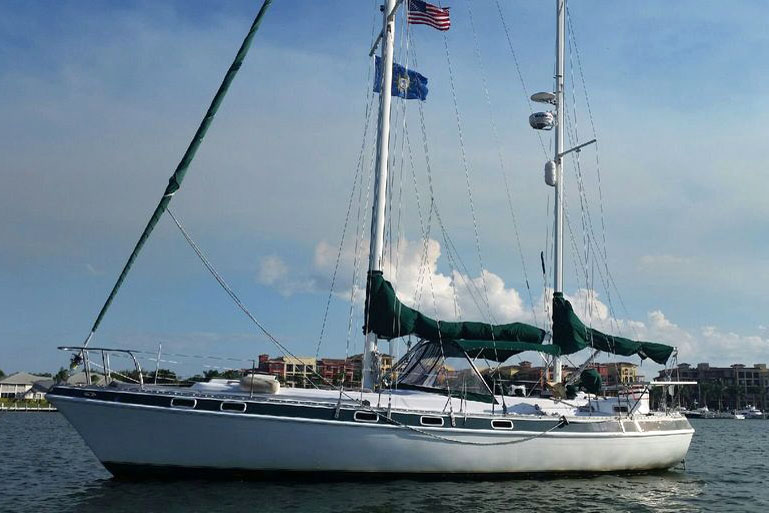 Morgan Out Island 415
Morgan Out Island 415The Morgan Out Island 415, a notable variant produced from 1975 to 1981, was significant for introducing a "walk-through" interior, enhancing flow and livability. While some critics occasionally noted their less-than-stellar windward performance compared to more aggressive designs, their unwavering focus on onboard comfort made them perfect for relaxed cruising and even full-time living aboard. The Morgan Out Island series, with its characteristic full keel and often a ketch rig, clearly prioritized stability and interior volume over outright speed.
Beyond the immensely popular 41 and 415, the original Morgan 45 (various iterations, including Nelson/Marek designs) and Morgan 46 (often Henry Scheel designs) also deserve recognition from this pre-acquisition era. These larger Morgan sailboats provided even more living space and storage, catering to sailors seeking extended cruising capabilities or a comfortable liveaboard platform. They offered substantial volume and often featured versatile interior layouts, further solidifying Morgan's reputation for practical and spacious cruisers.
Other highly regarded Morgan sailboats from the original company include the various Morgan 38 iterations (the 382, 383, and 384, for example), which offered a more refined blend of cruising comfort and sailing ability. Take the Ted Brewer-designed Morgan 382, for instance; it featured an elongated fin keel and skeg-attached rudder, aiming for a better all-around performance while still retaining ample interior space.
The Morgan 41 sloop also garnered acclaim for its pleasing lines and impressive stability, often drawing favorable comparisons to a more accessible Bermuda 40. These particular boats typically sported a masthead rig and were well-regarded for their balanced helm and excellent tracking.
Post-Catalina Acquisition Models: Distinguishing the Names
 Catalina Morgan 43
Catalina Morgan 43After Catalina Yachts acquired Morgan in 1984, the naming conventions became a bit more nuanced. While some existing Morgan designs (like the Out Island 41) continued production for a time, Catalina also introduced new designs under the "Morgan" or "Catalina Morgan" brand. It's important to clarify that a "Catalina-Morgan 43", for example, is a distinct model designed by Nelson/Marek and introduced around 1985 by Catalina, and is not the same as a pre-acquisition Morgan 43.
Similarly, a "Morgan 45" typically refers to models from the original company (including the Nelson/Marek 45-4), distinct from any subsequent Catalina-era designs. And while there were original Morgan 46 designs (like the Scheel 462), any later 46-footers associated with the "Morgan" name would have been designed and built under Catalina's direction, reflecting their specific design philosophy.
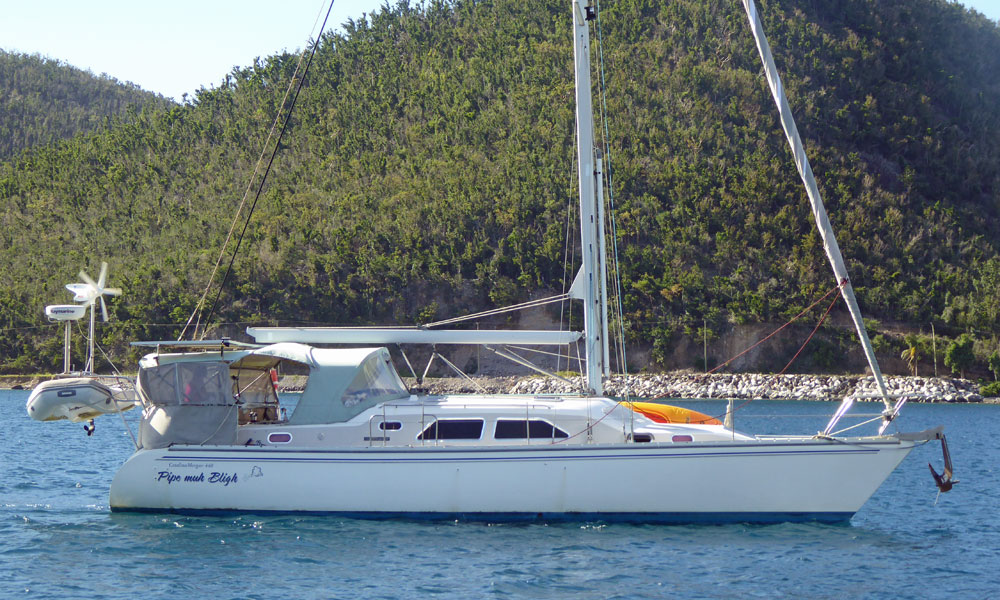 Catalina Morgan 440
Catalina Morgan 440A notable example from this post-acquisition period is the Catalina Morgan 440 Deck Saloon, introduced in 2004. This substantial 46-foot yacht marked Catalina's entry into the deck saloon market, offering panoramic views and a highly spacious interior designed for comfortable, extended cruising and liveaboard life. It represented a modern evolution of the "Morgan" concept under Catalina's design leadership, earning accolades like "Cruising World's Boat of the Year" for its category.
Over time, Morgan designs thoughtfully evolved, incorporating contemporary trends in yacht design. We saw a shift from longer keels to more modern fin keel configurations, aiming for enhanced maneuverability and performance. Yet, the fundamental ethos – providing a comfortable and capable cruising platform – remained steadfast.
Under Sail: Performance and Seaworthiness
Morgan sailboats are generally seen as stable and easily managed vessels. While the Morgan Out Island series, with its strong emphasis on interior volume and shallow draft, might be affectionately (or perhaps playfully) dubbed "floating condos" due to their slower performance upwind, they are, without question, capable cruisers, especially when sailing off the wind. Their inherent shallow draft and robust construction made them remarkably well-suited for coastal exploration and even some offshore passages, particularly in areas like the Bahamas where navigating skinny water is paramount.
Later models, designed with a more pronounced focus on sailing performance – consider certain Morgan 38 variants and the Morgan 41 – truly delivered a more spirited sailing experience. These boats, while still prioritizing comfort, tracked beautifully and demonstrated commendable stability, making them highly dependable choices for offshore work. Their ability to carry a good amount of sail area, often with overlapping genoas, provided ample horsepower for their displacement.
Stepping Aboard: Interior Layout and Comfort
The interiors of Morgan sailboats consistently mirrored the brand's core cruising focus. The general aesthetic often leaned towards traditional yachting interiors, typically featuring warm wood joinery and highly practical layouts. The clear emphasis was on maximizing interior space and creating genuinely comfortable living areas for extended periods aboard.
The Morgan Out Island series, in particular, was famed for its expansive interiors. It wasn't uncommon to find impressive headroom throughout the cabin, sometimes even extending right out to the toe rail in certain designs. Galley arrangements were frequently generous, offering ample counter space and abundant storage. While some earlier models might have had less distinctly defined zones, later designs often optimized layouts for improved privacy and functionality, including multiple heads and comfortable staterooms. The overarching goal was always to craft a practical and comfortable haven on the water.
A Lasting Legacy in the Sailing Community
Morgan sailboats have undeniably carved out a significant and cherished niche within the sailing community. Their typical customer base? Recreational sailors seeking a well-built, affordable, and wonderfully comfortable cruising platform. Overall, the brand enjoys a very positive reputation for consistently delivering solid value.
On the used boat market, used Morgan sailboats tend to retain their value quite well – a true testament to their durable construction and enduring appeal. You'll discover active online communities and dedicated Morgan sailboat owner's association groups, suchg as the Morgan 38 Sailboat Forum. Here, owners enthusiastically share knowledge, discuss maintenance, and connect over their shared passion for these boats. This strong community support only enriches the ownership experience.
The enduring legacy of Morgan Yachts lies squarely in its profound contribution to making sailing more accessible and enjoyable for a remarkably diverse array of individuals. Charley Morgan's vision of combining practical design with robust construction birthed a fleet of boats that have enabled countless adventures and, quite frankly, continue to do so today.
Considerations for Prospective Owners
While Morgan sailboats present a genuinely compelling package, it's always wise for prospective buyers to approach them with a balanced perspective. Like any older fiberglass boat, certain Morgan sailboat common problems can occasionally surface. These might include the potential for soft spots in balsa-cored decks due to water intrusion – often cosmetic, but sometimes requiring diligent repair.
Some early Morgan Out Island models occasionally experienced hull-deck joint issues at the rub rail. Original holding tanks, sometimes integrated into the keel, could be prone to leaks and might prove tricky to access. Rudder post issues, while not universally reported, have also been discussed for some models that lacked skeg support.
Performing a thorough pre-purchase survey is absolutely crucial to pinpoint any specific issues. The good news is that many of these concerns are well-documented within the owner communities, and practical solutions are often readily available. The inherent strong construction generally means that with proper care and some sensible investment in addressing age-related wear, a Morgan sailboat can reliably provide comfortable cruising for many, many more years.
Conclusion
From Charley Morgan's pioneering spirit to the incredibly popular Morgan Out Island series and beyond, Morgan sailboats have consistently offered a compelling proposition for recreational sailors. These are boats that truly prioritize comfort, spaciousness, and a capable cruising experience, all wrapped in a robust and often pleasingly aesthetic package.
While they might not always be the fastest off the line in a race, their enduring build quality, practical designs, and vibrant owner community make them a genuinely excellent choice for anyone seeking a dependable and enjoyable home on the water. For those ready to embark on coastal adventures or even push their cruising horizons further, a well-maintained Morgan sailboat stands as a testament to a lasting legacy of accessible and incredibly rewarding sailing.
Resources & References
- https://www.sailplace.com/wp-content/uploads/2016/02/Catalina-Tech-Brochure.pdf
- http://sailingmagazine.net/article-1699-used-boat-notebook:-morgan-34.html
- https://en.wikipedia.org/wiki/Charley_Morgan
- https://sailboatlab.com/data_sheet/4845/0/
- https://forums.sailboatowners.com/threads/morgan-m33-vs-an-out-islander.120053/
- https://www.spinsheet.com/boat-reviews/catalinamorgan-38-boat-review
- https://sailboatlab.com/data_sheet/4838/0/
- https://www.yachtdatabase.com/en/review.jsp?id=Morgan+45+Mk+IV
- https://issuu.com/stpetersburgyachtclub/docs/ss_feb_2023/s/18413676
- https://murrayyachtsales.com/morgan-38s-382-383-384-reviews-and-more/
Recent Articles
-
Planning Your Sailboat Liveaboard Lifestyle: An Ocean Sailor's Guide
Dec 06, 25 05:18 AM
Seasoned sailors share their methodical risk analysis for planning a secure Sailboat Liveaboard Lifestyle, covering financial, property, and relationship risks. -
Marine Cabin Heaters: The Expert’s Guide to Comfort & Safety at Sea
Dec 05, 25 06:52 AM
Choose the best Marine Cabin Heaters for your vessel. Expert advice on diesel, paraffin, and hot water systems for year-round cruising comfort. -
Marine Water Heating Systems: Free Hot Water from Your Boat's Engine
Dec 03, 25 05:06 PM
Tap into your engine's heat to get free hot water on board. An experienced ocean sailor's guide to marine water heating systems, calorifiers & safety.


